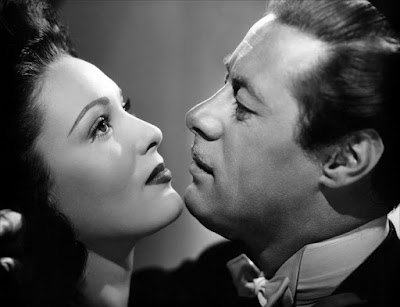Given that he made one of the great "heist" movies in Rififi, I wonder what went through director Jules Dassin's mind when he revisited the heist film in Topkapi (1964). In Rififi, the heist comes in the middle of the movie and takes up nearly a third of the running time, but in the end, the heist isn't really what the movie's about. It's a noir film to the core. Topkapi is an entirely different kettle of fish. This is the heist film as "caper," and it's mostly a confection without any noir shadows cast through the film. It's intended as fun, and for the most part, it is. Dassin moves the heist to the end as the film's climax, and it's an altogether more ambitious and complex sequence than the one in Rififi. In its way, it's just as influential.
Monday, August 29, 2011
A Night in Byzantium
Posted by
Vulnavia Morbius
at
6:42 AM
6
comments
![]()
Labels: classic film, Jules Dassin, Topkapi
Friday, August 26, 2011
Fundraiser Update and Cultural Snapshot
So I've covered my airfare. Rock and roll! I still need to cover the festival pass, with a little over a week to go. I'm totally in love with the things my backers are asking me to draw, and I'm caught up on the sketch cards. The first batch go into the mail tomorrow. Sadly, these two go to different people. They seem like they should be a matched set:
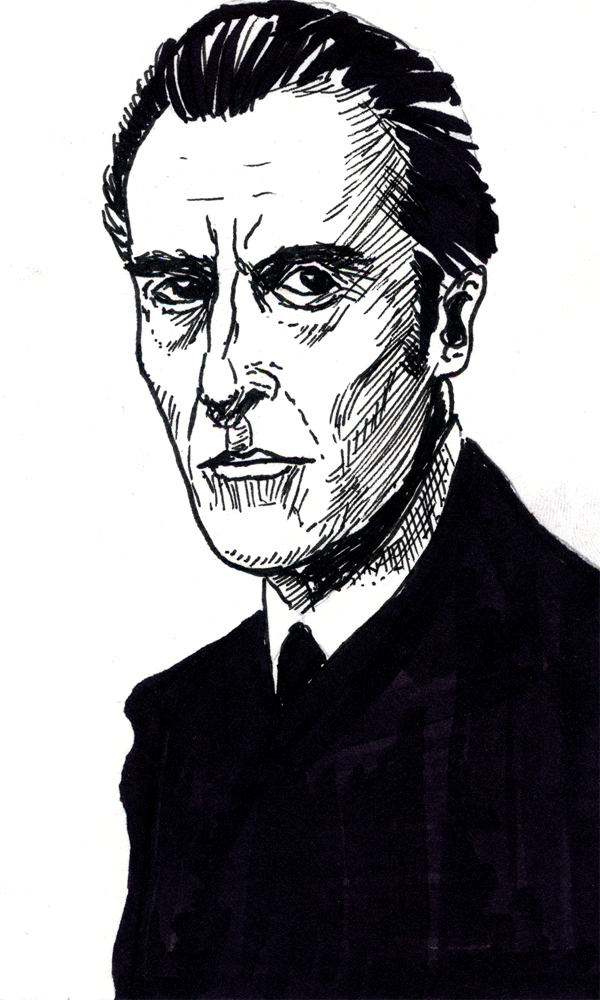

Anyway, there's still time to get a bid in on a sketch or a DVD-R, and here's the button again:
I've been following the various internet kerfuffles over DC Comics and their "relaunch" next month. I have a lot of conflicting opinions on the relaunch, but I'm totally sympatico with the notion that DC has a diversity problem.
Posted by
Vulnavia Morbius
at
7:09 AM
6
comments
![]()
Labels: art, comics, fundraisers, Shameless Self-Promotion, Spider-Man, Wonder Woman
Monday, August 22, 2011
Sword in Hand, Brain in Neutral
There's no getting around it. We're living in the dark ages of theatrical exhibition. The last two big films I saw in the multiplexes were Harry Potter and the Deathly Hallows Part II and Captain America. In both cases, the films were projected on the same equipment used for their 3-D showings and in both cases, the film was too dark to enjoy. It was like watching them through a welding glass. In a perfect world, there would be a blog post for each of these films, but I don't think I can give either of them a fair shake based on how I saw them. "But why didn't you just go see them in 3-D?" I can hear someone asking. Because 3-D gives me a headache and I don't like paying the upcharge. So congratulations, Hollywood, you've finally found a way to drive me from the theater. In another era, you would have had my money twice over this past weekend, because I certainly would have gone to see the new Fright Night and the new Conan the Barbarian. Because I couldn't find a reliable 2-D showing of either film, I stayed home. I soothed the hurt by watching the original Conan the Barbarian's idiot sequel, Conan the Destroyer (1984, directed by Richard Fleischer), a film I originally saw at a drive-in in South Dakota on a triple bill with Red Sonja and Iceman and never saw again. It turns out, that that wasn't an optimal way to see this film, either, and, indeed, it turns out that I didn't give it a fair shake all those years ago.
Posted by
Vulnavia Morbius
at
7:00 AM
6
comments
![]()
Labels: 3-D, Conan the Destroyer, fundraisers
Sunday, August 21, 2011
Assassination Games
I don't know what I expected when I sat down to watch Takashi Miike's well-regarded 13 Assassins (2010). The second coming of Akira Kurosawa, maybe? That's what the reviews have suggested. Serves me right for reading them. What I got, instead, was a Miike movie, of course. Truth to tell, I'm not even sure how I want to write about it. Please bear with me as I stumble around the movie.
Posted by
Vulnavia Morbius
at
4:11 PM
1 comments
![]()
Labels: 13 Assassins, 2011, fundraisers, Japanese Cinema
Saturday, August 20, 2011
Send Krell Laboratories to Fantastic Fest!
A friend of mine has invited me to Fantastic Fest in Austin Texas next month, and I'd love to go and blog the festival. Unfortunately, I'm as much a victim of the current economy as anyone and I don't currently have the money for it. I have a place to stay lined up for the festival, but airfare, food, and (most importantly) tickets are all costs I'm short. So I'm staging a fundraiser. That's where you come in. I'm soliciting donations. In return, I'm planning to blog about the entire festival, so you'll be supporting new content. But if that's not enough of an incentive, there's more. For anyone who supports this fundraiser with a $15 donation, I will send that person a sketch card of anything they want. It can be a movie star, a comic book character, a D&D character, whatever their heart's desire. Sketch cards will be on 3x5 pieces of bristol board, in ink, along the lines of this drawing I did of Claudia Cardinale:
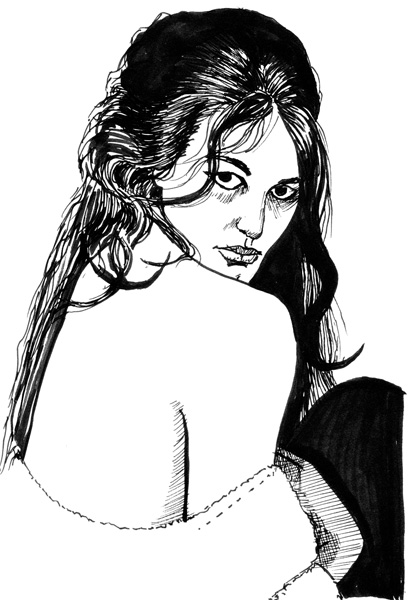
Or this one I did of Vincent Price (though the finished card would, of course, be in ink):
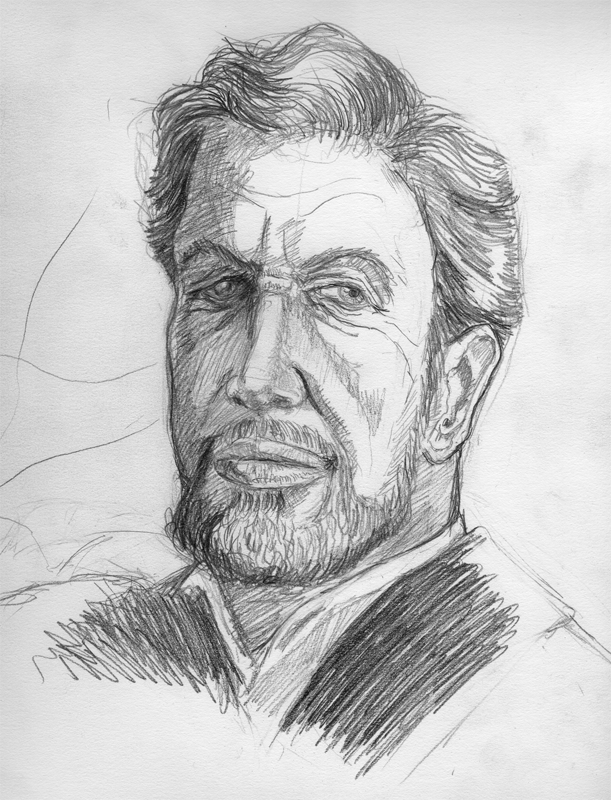
I may have to put a cap on these based on how many I end up having to do. I don't want to make anyone wait a long time to get their sketch.
But wait, there's more! Donate $25, and I'll send you a DVD-R of either Orson Welles's rarely seen film, Chimes at Midnight or Ladislaw Starewicz's equally rare animated feature, The Story of the Fox, your choice. Just be aware that these won't be pristine prints by any means, but they'll at least be watchable. There will be 8 of these available. Donate $50, and I'll send you DVD-Rs of both films. There will be 8 of these available, too.
Smaller donations are, of course, welcome, too, and I'll make a point of thanking each and every person who donates on the blog. I figure I'll close out the fundraiser one way or another two weeks from now, on September 3rd.
How to donate: just press this button. Make sure you send me a note with your donation.
And in the immortal words of Bartles and James: "Thank you for your support."
Posted by
Vulnavia Morbius
at
9:56 AM
0
comments
![]()
Labels: Fantastic Fest, fundraisers
Wednesday, August 17, 2011
This is how to get me in the theater...
I don't normally post trailers for upcoming movies, particularly since most trailers are crap these days, but I'm making an exception for this trailer for the upcoming The Woman in Black. This is how you do it:
Here's what I'm taking away from this trailer:
First, this is creepy as hell. It takes every creepy image one associates with desolate Gothic ghost stories and dumps it into a richly textured visual pageant.
Second, the makers of the trailer have come up with a rhyme that gives this a kind of fairytale ambiance. By blotting out the diegetic sound from the footage from the film, this amplifies the creepiness of the images.
Third, this doesn't give away the store. What do I take from this regarding the story? That it's a ghost story. The trailer keeps the movie's secrets.
Fourth, Daniel Radcliffe has turned into an absolutely adorable young man, and boy, howdy, does the period costume amplify this. Yum.
Fifth, I'm going to see this in the theater whenever it comes out. This is the aim of a good trailer, and this one succeeds.
I should mention that this is a Hammer movie, the first since their rebirth to go full-on Gothic. That by itself is cause for rejoicing. I'm there.
Posted by
Vulnavia Morbius
at
11:27 AM
3
comments
![]()
Labels: The Woman in Black, trailers
Sunday, August 14, 2011
Divine Comedies
Our erstwhile friend, the Self-Styled Siren, has a tag on her blog called "crabby dissent." That phrase really is perfect for how we feel this morning at stately Krell Labs, so I hope she'll forgive me for swiping it. I also hope she'll forgive me for the crime I'm about to commit, because I know that she's a fan of Preston Sturges and, well, I'm kind of not.
My partner has been giving me grief again about the dearth of comedies in our movie collection. This led to a huge to do about the fact that there aren't ANY comedies in our Netflix queue except those she put there herself (and those are movies I tend not to like). I suppose I should own up to something here: Me and comedies don't get along very well. It's not that I don't like comedies. When a comedy is great--your Some Like it Hots, your Gold Rushes, your Girl Shys--then they're ambrosia. Great comedies are one of the true indicators that cinema loves us. Thing is, when comedies are less than great, or worse, when comedies are flat out bad, I get restless in my chair. To me a mediocre comedy ranks below a bad action film and a bad comedy is just about the worst kind of movie imaginable. I mean, if you have a bad horror movie or a bad sci fi movie or a bad melodrama, there might be some laughs. If you have a bad comedy, though, by definition there are no laughs. Not even accidental ones. Kill me now.
So there's a dearth of comedies in my house.
Posted by
Vulnavia Morbius
at
5:00 PM
4
comments
![]()
Labels: classic film, comedy, crabby dissent, Libeled Lady, Preston Sturges, Unfaithfully Yours
Friday, August 12, 2011
The Stupidest Comic Book Panel in the History of the Universe.
This piece ran on another blog back in, wow, 2008. It more properly belongs here.
Since my recent jaunt through back issues of the Swamp Thing, the lid of that particular long box of goodness has remained open. This box also has a huge run of Superman comics, mostly (but not exclusively) dating from around the time of the 1987 revamp by John Byrne. I had a wild hair and decided to reread some of those comics this weekend. Some of them aren't bad; Byrne's take on Mr. Mxyzptlk in the eleventh issue is terrific, and there are some nice touches throughout the run. Personally, I liked the book a lot better when Byrne left and Roger Stern started writing it, but Stern has always given great value (he's one of the unsung masters of comics writing). But for all of those pleasures, Byrne still did shit like this page from the second issue:
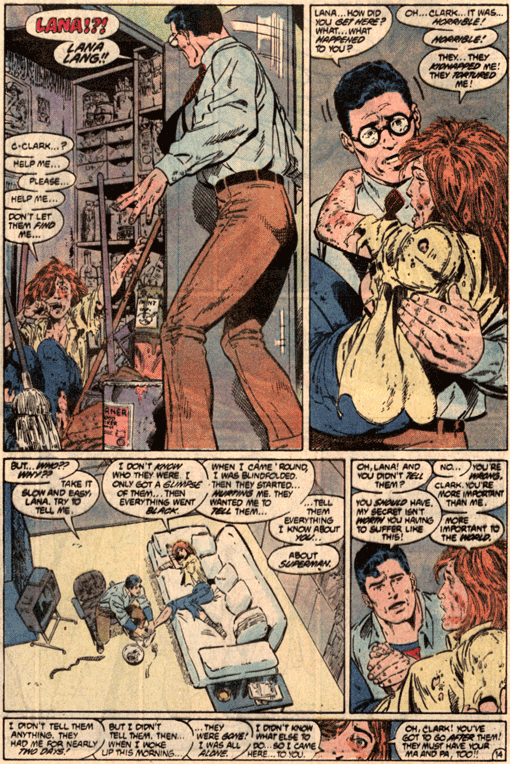
Never mind the implied violence suffered by Lana Lang at the hands Lex Luthor and his goon squad. There's a debate over misogyny to be had in this issue, but that's not why this page sucks. It's that bottom panel. The long one where you see half of Lana's face and a whole bunch of word balloons? Let's look at this again:

I mean, WTF?
Now, Byrne isn't the only person guilty of stuff like this. There used to be panels like this all over the early issues of Chris Claremont's X-Men, in which Claremont would sometimes completely obscure Dave Cockrum's art. But this is a little bit different, because those X-Men stories were an example of a writer trying to assert his primacy over the artist. THIS on the other hand, is an artist shooting himself in the foot.
It's worth considering that, long before he began making a complete ass of himself on the internet, Byrne was considered to be one of comics' premiere storytellers. Not a great innovator, true, but he knew his way around a comic page. So maybe he couldn't figure out a way to lay this out based on the script he had been handed. Perhaps there were editorial imperatives to consider. Except...well, there are extenuating circumstances here. First, this panel has enough dialogue for an entire page. There's no reason for there NOT to be an additional page. Byrne had the clout at the time to demand (and get) TWO first issues for his revamp, so he surely could have sneaked another page into this sequence with no problems. Second, Byrne wrote this comic himself, in addition to drawing it. At least poor Dave Cockrum was at the mercy of editors and writers. Byrne has no one to blame but himself for this atrocity.
Posted by
Vulnavia Morbius
at
3:37 PM
1 comments
![]()
Labels: "Meatloaf again?", comics, John Byrne, stupid storytelling, Superman
Monday, August 08, 2011
Playing the Chump
Movies change over a lifetime. Some change a lot. I revisited Ghidorah: The Three Headed Monster (1964, directed by Ishiro Honda) over the weekend, a film I loved as a kid. The only thing that holds up to adult scrutiny in that movie is the awesome Akira Ifukube score. The rest is a disaster. Watching Mothra, Rodan, and Godzilla have a "conversation" is one of the sillier things I've seen on film recently, while the human story involving repressed memories of a woman maybe descended from Martians is the usual mish mash. I still have some affection for it, but Toho has made better monster-rama team-ups. It's a film I probably won't ever revisit again. That kind of makes me sad. Is the child inside me dead? I hope not, but there are some childish things adults should leave behind, I guess.
Some films change a little, but sometimes that small shift can knock a movie out of the bright circle of fond memory. A case in point is The Sting (1973, directed by George Roy Hill), a film I used to love. It's been, I dunno, a decade since I last saw it. It's a film I originally saw with my mother, and it was a film she loved. It was something we could share, actually, and mom usually had good taste, so it's a memory I treasure. When I sat down with my sweetie to watch it last week, I expected it to be a good experience. I was kind of disappointed. The whole thing fell flat this time out and I'm at a loss as to explain what ineffable quality was missing. It didn't help that my partner didn't like it (this was the first time she had seen it). That was kind of a blow, too. I understand her reaction, because the film didn't work for me this time, either.
The Sting is one of those movies that's trying to put one over on the audience, which is interesting as far as it goes because its structure is like one of those Penn and Teller routines where the magicians dismantle the trick to show you how it works. The audience is privy to the con. The story follows small time con man Johnny Hooker (Robert Redford). Hooker and his partner, Luther (Robert Earl Jones), have run a small grift on a guy who turns out to have been a money courier for big time mobster Doyle Lonnegan (Robert Shaw). Lonnegan brooks no interference with his operation, big or small and he soon dispatches his thugs to knock off Johnny and Luther, though they miss Johnny. Luther, before he dies, puts in a good word for Johnny with long con mastermind Henry Gondorff (Paul Newman), and Johnny convinces Henry to run the long con on Lonnegan as a means of getting his revenge. They set him up with a card game, in which Johnny appears to betray Henry to Lonnegan, then tell him the tale of how he wants to take over Henry's bookmaking establishment with a sure scam that will take it for all its worth. The other two elements of the movie are corrupt cop Snyder (Charles Durning), out for his cut of Johnny's takings, and the FBI, after Henry on a federal warrant. Not everything is as it seems.
The way the movie works is that it tells the audience everything save for one or two small details. Now, if the audience is onto those details, the gig is up and the movie becomes an exercise in makework. It's a house of cards. And this, I propose, is what spoils my fondness for the movie, because once you've seen the whole thing, it holds no surprises. Not cinematic ones anyway. I think the filmmakers know this, because they've built the thing around the charm of Robert Redford (who was probably too old for the role of Johnny Hooker) and Paul Newman, then hedged their bets with a raft of interesting character actors and a sentimental ragtime score. And there are touches that are suggestive of a better film than what one actually gets. I love the idea that Eileen Brennan's character not only runs a house of ill-repute behind a merry-go-round, but that when things get slow for the girls, she fires it up and lets them ride it. That's cool, but it's a fleeting moment. Otherwise, the street scenes all have some weird feeling of being "on set," and visually the whole thing screams "movie." And not in a good way. George Roy Hill is indifferent to any of the possibilities of abstraction offered by the period set and his direction of the film is utilitarian at best.
I suppose this experience could have been worse. I mean, I like The Sting. I still like it, to an extent. But if it was never a favorite before, it will definitely never be a favorite in the future, even if I do choose to watch it again. That's looking pretty dim at this point.
Posted by
Vulnavia Morbius
at
7:32 AM
2
comments
![]()
Saturday, August 06, 2011
Regular Joes
I'm not entirely sure why I found myself watching G.I. Joe: The Rise of Cobra (2009, directed by Stephen Sommers) earlier this evening. Pain and drugs, I suppose. A desire for something uncomplicated maybe. I mean, I've shunned much better directors than Sommers for cinematic offenses a LOT less vexing than Van Helsing, after all. For that matter, given the state of the world even here in the (barely) first world, the resources spent on this movie seem kind of, I dunno, obscene. And still, I watched it. All. The. Way. Through.
Posted by
Vulnavia Morbius
at
9:28 PM
5
comments
![]()
Labels: G. I. Joe: The Rise of COBRA
Tuesday, August 02, 2011
All for One
There's a moment in Richard Lester's The Four Musketeers (1975) in which Cardinal Richlieu orders his lackey, Rochefort to his knees. In that moment, I realized that Charlton Heston really should have played more villains. Damned, he's good at it. I mean, considering that Rochefort was played by the intimidating Christopher Lee, it's a testament to the star power of Heston that he so dominates the scene (and the film). The Four Musketeers is ruled by its villains. One of its alternate titles is "Milady's Revenge," referring of course to Faye Dunaway's lethal Lady de Winter. The movie is entirely about her machinations. She seeks revenge on D'Artangnan for spurning her attention and foiling her plans. She makes a bargain with Richlieu: she'll prevent the Duke of Buckingham from relieving the Huguenots at the besieged city of La Rochelle if he'll give her carte blanche to dispose of her enemies as she sees fit. Unfortunately for her, one of her past enemies is Athos, who once married Lady de Winter only to discover that she was disgraced. Athos doesn't exactly thirst for revenge, but when the time comes to foil Milady's plans, he takes it.
Posted by
Vulnavia Morbius
at
9:22 AM
4
comments
![]()
Labels: The Four Musketeers



